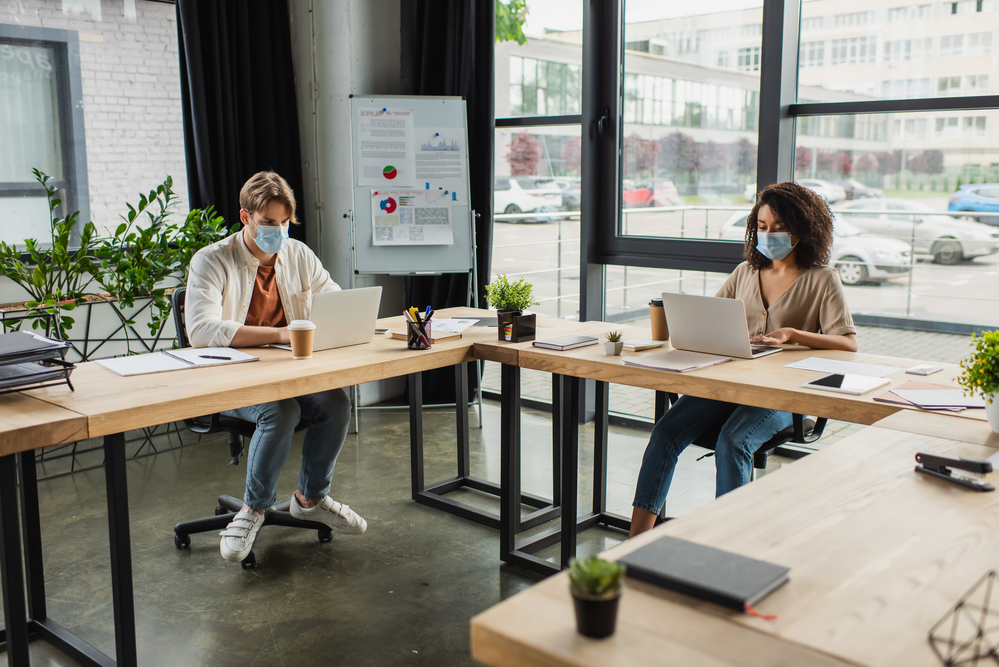Now Reading: What are the legal duties of employers towards their employees in managing a safe return to the office & workplace?
-
01
What are the legal duties of employers towards their employees in managing a safe return to the office & workplace?

What are the legal duties of employers towards their employees in managing a safe return to the office & workplace?
With the furlough period coming to an end, many employers are thinking about bringing their workers back into the office and ending the option for home working. This is not without its risks, and anyone expecting a return to normalcy might be in for quite the surprise.
The government has now lifted most restrictions, including mask-wearing requirements unless a company decides to implement their own rules. However, there are still some guidelines business owners need to follow to protect their workforce.
Companies will need to update their risk assessment documents to include any measures they might have to help tackle the spread of COVID-19. With social distancing rules now removed, there are some guidelines businesses will need to follow. Some of these have remained unchanged but are considered more important now:
- Adequate ventilation
- Sufficient cleaning
- Hand washing
While the government has not mandated additional steps, they point to provisions like encouraging employees to get vaccinated and regular workplace testing to help limit spread in the workplace.
Improving ventilation
The law has always stated that employees must have an adequate supply of fresh air when working in enclosed spaces. This can either be natural fresh air from an open window, door, or air vent, or mechanical ventilation that uses fans to bring clean fresh air from outdoors.
This hasn’t changed as a result of the pandemic, but many workers are taking this much more seriously now that we know how COVID-19 spreads. In your risk assessment, you’ll have to identify poorly ventilated areas and how you will address the need for ventilation.
Good ventilation reduces the number of small particles, including viruses, in the air. If there is no ventilation, these particles can build up and increase the risk of droplet transmission.
Improving cleaning
The guidelines for cleaning the workplace have been updated to help address the issue of surface transmission. In addition, it includes guidance for what your cleaning regime should look like depending on your workplace.
Steps like identifying frequently touched surfaces and cleaning shared equipment and tools are likely to be more important in a post-pandemic world.
Encouraging hand washing
One of the simplest steps we can take to help stop the spread of the virus is to wash our hands regularly. Employers are being encouraged to ensure workers can access handwashing facilities with ease. And in areas where this would be difficult, a hand sanitiser should be provided.
The guidance has been updated to suggest that handwashing stations should be added near the entry/exit points to encourage frequent washing. And hand sanitiser is also recommended at additional points.
Can employers enforce testing and vaccinations?
Some employers are encouraging regular testing to help protect individuals in the workplace. Some industries may go further and mandate vaccinations for all workers. Those employed in the care sector, for example, are facing mandatory vaccines to be able to work with the elderly and vulnerable.
While it is down to individual companies to decide which measures to introduce, including keeping measures like social distancing and masks, we don’t yet know if this will lead to an increase in unfair dismissal claims.
Employers will need to tread carefully when exploring anything like mandatory vaccines or workplace testing. For example, there is always the risk an employee could bring an unfair dismissal claim if they are fired after revealing they aren’t vaccinated.
There is also the risk it could be interpreted as discrimination. For example, young people may be reluctant to get a vaccine because they perceive the low risk of a blood clot to the higher than the risk of contracting COVID-19. This could be interpreted as age discrimination because an older person might not see this as a risk.
How to manage a return to work
When bringing workers back into the workplace, there are steps to consider when making your workplace COVID-secure. Communication and transparency is the best place to start. Speaking to your workers and finding out about their concerns will help you understand how to manage the return to the office.
If workers are concerned about crowding in the office, consider a staggered workday or allowing occasional home working. And if workers are worried about ventilation as we head into winter, now is an excellent time to start thinking about improving your office.
Encouraging vaccination and testing will always be more welcome than a mandate. Making anything mandatory could divide your office and create unnecessary tension. Making it easier for workers to get their vaccines by offering time off may help.
Ultimately, if you want to avoid costly claims of discrimination and unfair dismissal, try to remain flexible and understanding of different views. While government guidance might be a good place to start, it’s also important to consider your workforce and what is best for them when implementing workplace rules.










